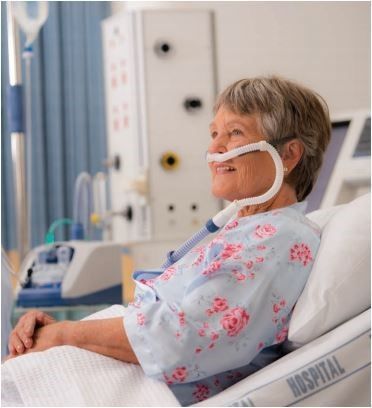Antibiotic-resistant superbacteria stewardship and therapeutic innovation the strategies of attac
Antibiotic-resistant superbacteria: stewardship and therapeutic innovation the strategies for attack
Two key measures: the implementation of stewardship principles-through the appropriate use of antibiotic therapies, the introduction of strict hygiene protocols within hospitals and the revival of vaccination practice-and the development of new molecules.
On this front, innovative active molecules are expected to arrive soon against gram-positive and gram-negative microorganisms.
All this within the framework of a unified “One Health” vision of human and animal health.
“Let’s preserve the value of antibiotics” is the recommendation for health professionals, institutions and citizens relaunched in the Continuing Professional Education Course
“Bacteria and Antibiotics – Scenarios of a Permanent Conflict,” sponsored by Sapienza University of Rome’s Master’s program ‘Science in Journalistic Practice,’ with the support of MSD Italy.
The counteroffensive has begun. After the time of alarms, the attack by Institutions, Scientific Societies and Pharmaceutical Companies against antibiotic-resistant superbugs is underway: a health threat more fearsome than cancers.
In Europe, more than 4 million people a year are affected by hospital-acquired bacterial infections, with 25.000 estimated deaths from infections from resistant germs. In our country, 7 percent to 10 percent of patients encounter a multidrug-resistant bacterial infection every year. Care-related infections (HAIs) affect about 284.000 patients causing about 4.500-7.000 deaths.
Worldwide, by 2050, bacterial infections will cause about 10 million deaths per year, far exceeding deaths from cancer (8.2 mL/year), diabetes (1.5 mL/year) or traffic accidents (1.2 mL/year) with a negative impact-according to recent International Monetary Fund estimates-of about 3.5 percent on global GDP.
There are two main measures to be put in place:
- the adoption of the principles of antimicrobial stewardship, or appropriateness in the use of antibiotics to reduce their misuse and prolong their lives as much as possible;
- The promotion of incentives for the introduction of innovative therapies that can cope with resistant strains; and. The good example comes from the United States where the Obama government has expanded the use of funds earmarked for bioterrorism to the development of antibiotics active against microorganisms with high resistance, allocating for 2016 alone about $1.2 billion.
Italy is also moving to combat antibiotic resistance: the revival of declining vaccination coverage and the adoption of strict hygiene protocols in Hospitals will be an integral part of the National Plan to Combat Antibiotic Resistance coordinated by the Ministry of Health and inspired by the World Health Organization’s Global Plan of Action.
But there are many issues still under discussion. Institutions, clinicians and representatives of civic movements discuss this today at the Continuing Professional Education Course Bacteria and Antibiotics – Scenarios of a Permanent Conflict, sponsored by Sapienza University of Rome’s Master’s program ‘Science in Journalistic Practice,’ with the support of MSD Italy.
“Institutions are convinced that the dissemination of knowledge and correct information is an essential prerequisite for the informed and appropriate use of antimicrobials – says Mario Melazzini, President of the Italian Medicines Agency – the Ministry of Health, with the support of AIFA and other experts, is working on the implementation of the National Plan. At the same time, the Italian Medicines Agency conducts intensive information and awareness-raising activities on the issue through its institutional channels and tools (portal, newsletter, social media) and specific communication initiatives aimed at healthcare professionals and the general population“.
The ability of bacteria to develop many different mechanisms to escape the action of antimicrobial drugs was predicted by the discoverer of penicillin Alexander Fleming himself: however, the speed with which microorganisms know how to select resistant strains, far greater than the speed with which scientific research develops a potential solution, was not taken into account.
“This steadily increasing resistance is a threat to the effectiveness of antibiotics, both in the treatment of life-threatening or life-threatening diseases and in the prevention of disease in individuals undergoing surgery or chemotherapy – affirms Francesco Paolo Maraglino, Director Office V of the Directorate General of Prevention of the Ministry of Health – in order to counter this phenomenon, action is needed in which everyone, from governments to citizens, is committed to preserving the value of these drugs“.
The categorical imperative is to use the available antibiotics well: if the continuous chase between drugs and microorganisms has led to the development of some 250 molecules over the years, each new drug introduced into clinical use will sooner or later find resistant bacterial strains. “The development of antibiotic resistance is an ongoing phenomenon, determined by changes in the genetic configuration of bacteria, such as chromosomal mutations or transfer of resistance factors mediated by various genetic entities” states Maurizio Sanguinetti, Professor of Medical Mycology and Diagnostics at the Institute of Microbiology, Catholic University of the Sacred Heart.
Generating resistance is not the exposure of bacteria to antibiotics per se, but the increased selective pressure due to the overuse and misuse of antibiotics in human and animal health and their environmental presence and spread.
“Rational management of the problem cannot disregard the “One Health” approach and must involve all the different sectors with targeted interventions in the pharmaceutical-health, veterinary, food, and environmental fields, giving a leading role to research and innovation” states Anna Teresa Palamara, President of the Italian Society of Microbiology (SIM). “The call to all is to promote ‘conscious’ use of antibiotics in all activities in which they are used, human or animal“.
“Antimicrobial stewardship, the cornerstone of the strategy against resistance, means appropriate and personalized use of antibiotics. “Any anti-infective therapy should be administered only when there is reasonable clinical certainty of infection – states Pierluigi Viale, Full Professor of Infectious Diseases at Alma Mater Studiorum University of Bologna and Director of the UO Infectious Diseases of the AOU Policlinico Sant’Orsola-Malpighi in Bologna – and must be very timely, very aggressive in terms of dosage, and as brief as possible: if the antibiotic fails to eradicate the infection quickly, it can become a driver of the progressive selection of resistant strains, capable of transmitting genotypic and phenotypic variations to their offspring“.
Italy is the European country with the highest resistance rates, which, in some cases, are as high as 50 percent. About half of the drugs used against bacteria are ineffective, and these include some of the most widely used antibiotics. One of the most fearsome “superbugs” is klebsiella pneumoniae, which causes pneumonia, circulatory and urinary tract infections.
The percentage of invasive strains resistant to third-generation cephalosporins in Italy is 55.1 percent.
Activities to combat this phenomenon also go through protocols to contain care-related infections in hospitals and nursing homes. The most common infections are pneumonia (24 percent) and urinary tract infections (21 percent).
“The measures to be put in place to counter the spread of these microorganisms are well known – he states Claudio Viscoli, President of the Italian Society for Infectious Therapy (SITA) – education of health workers in handwashing and glove use, screening of carriers of resistant strains and their isolation, contact screening, and rapid microbiological diagnosis are capable of halting the phenomenon, if applied together and by all hospitals and health care residences, but implementing these procedures for everyone and everywhere requires resources and strong central action“.
The adoption of Protocols also passes through citizen involvement, and an impetus in this direction comes from the Civic Recommendations on the Prevention of Care-Related Infections promoted by Cittadinanzattiva. “It is also particularly important to empower citizens – states Antonio Gaudioso, Secretary General of Cittadinanzattiva – through indications such as taking care of personal hygiene, asking for personalized hospital supplies, checking with staff on the maximum time to keep catheters, avoiding visiting the hospital when you have the flu“.
An integral part of the intervention strategy is the development of new antibiotic molecules. On this front, the arrival of molecules active against gram-positive microorganisms-for example, a new oxazolidinone (tedizolid) effective against methicillin-resistant staphylococcus in skin and soft tissue infections in single daily administration and offering shorter therapeutic cycles (6 days vs. 10)-and gram-negative ones, with a new-generation cephalosporin (ceftolozane-tazobactam) with marked anti-Ps activity, is announced soon.aeruginosa, formulated together with a beta-lactamase inhibitor that extends its activity to gram-negative beta-lactamase-producing broad-spectrum, effective in complicated abdominal and urinary tract infections and in evaluation in nosocomial pneumonias.
“The advent of some new antibiotics on the therapeutic scene may help clinicians cope with the emergency, but new rules are needed so that all patients can be treated promptly with these new drugs” argues Francis Menichetti, Director UOC Infectious Diseases, AOU Pisana. “In addition, there is a need to support pharmaceutical companies through incentives and fast-track lanes for new drugs, while revitalizing independent research with dedicated funds to evaluate new therapeutic strategies useful in daily clinical practice“.
Crucial actions, also reiterated in the joint statement of more than 80 companies presented at the last “World Economic Forum” in Davos with the aim of urging governments and businesses to take synergistic and global investment action to combat the worrying and growing phenomenon of antibiotic resistance. “Governments, Agencies, Scientific Societies, and Companies must necessarily be allies in the face of a challenge of this magnitude – states Nicoletta Luppi, MSD Italy President and CEO – MSD has a long history of therapeutic innovation in the treatment of infectious diseases and is one of the few pharmaceutical groups still active in fostering the adoption of true “antimicrobial stewardship” through the development of new antibiotics and new antifungals, the commercialization and research of new vaccines for human use, and investments in the animal field through its Animal Health division. We intend to reaffirm and continue our commitment against infectious diseases, not only by continuing to research technological innovations in our laboratories, but also by collaborating with all stakeholders involved through transparent and valuable partnerships alongside public health“.


